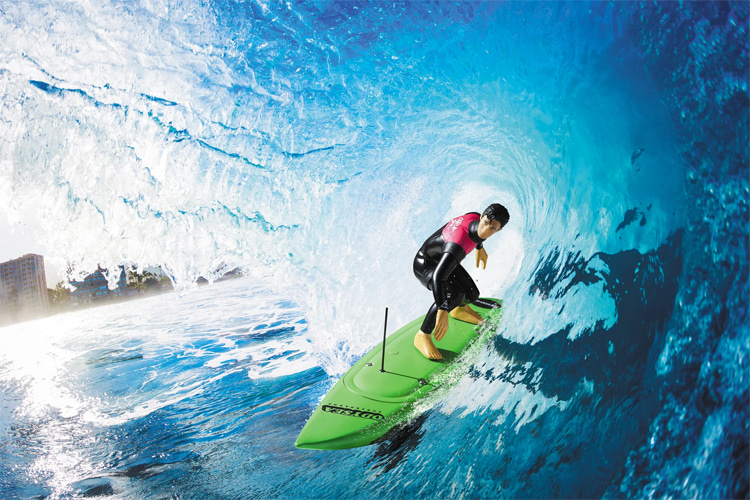Who said toys are only for children? Meet the latest fast-growing hype in water and wave sports: radio-controlled (RC) surfing.
Are you finished with your surf session? Are the waves too small to paddle out? Are you bored to death in front of a flat ocean?
A radio-controlled surfer, also called a remote-controlled surfer, might very well be the plaything you didn't know you wanted. So, what exactly is it?
An RC surfer is a buoyant, hollow, small-scale surfer-and-surfboard model kit operated wirelessly from a distance by a transmitter.
The transmitter operates in a frequency used by other devices like microwave ovens, wireless LAN, Bluetooth, digital cordless phones, and other ISM radio band devices.
The controller features several parts: an antenna, a rudder wheel to turn the model left or right, and a throttle trigger to control the toy forward and backward.
Some models also feature optional buttons and controls to adjust the throttle, steering, and rudder angle in small increments.
Ultimately, the idea is simple - transforming classic remote-controlled boats into skillful robot surfers who can pull off the boldest tricks.
Remote-controlled surfers can easily cost up to 600 dollars.
Manufacturers allow you to select the action figure, the fin setup, the type of battery, the motor, and the radio control, and customize your RC surfer by adding extras to the figure and surfboard.
There are several online forums where remote-controlled surfer geeks share their knowledge and products.
It is even possible to build your own electric surfer by watching DIY videos online.
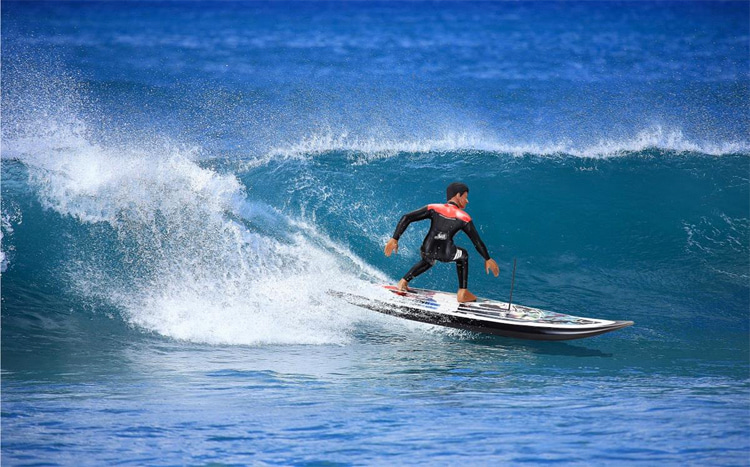
Ride Anywhere
Once it's set up, it's time to hit the water.
The first thing you need to do is float the hull on the water and check that it can right itself and does not capsize.
With time, water may get inside the surfer figure, eventually making safe righting difficult.
So, make sure to drain out the figure every once in a while.
Some models feature an auto-recovery function that makes these toys nearly 100 percent unsinkable.
Remote-controlled surfers are super fun. They allow you to perform all the tricks and maneuvers you can do in real surfing.
Roundhouse cutbacks, snaps off the top, frontside aerials, and endless tube rides - it's all possible in the world of radio-controlled surfing.
The surf gadget has been conquering young and older surfers.
You can even get barreled and ride big waves - all you need is above-average wave reading skills.
If you're inland, you might always play in swimming pools, lakes, or rivers.
Operating Tips
Playing with a radio-controlled surfer requires practice.
The road to experienced riding is relatively short, but the more you surf, the better and more spectacular the maneuvers you'll pull off.
Here's how to get used to your RC surfer:
- Hold the transmitter so the antenna points upward - use your index finger on your left hand to control the throttle trigger and your right hand to control the rudder wheel (or vice versa, depending on the model);
- Gently pull the throttle trigger and turn the rudder wheel left and right to drive the board;
- Squeeze the throttle trigger gently and release - repeat this motion to control speed;
- If you are unsure of the rudder, practice holding the transmitter with the rudder wheel facing you;
- Some models allow you to set the rudder's dual rate (D/R) adjuster for increased or decreased steering angle response - in the early stages, set it for lesser response;
- After you become familiar with the controls, practice with high-speed turns to experience the full potential of the remote control surfing toy;
- If the board stops far away from you, use any tools - like a fishing tackle - to retrieve the board;
Surfing Tips
Are you ready to cut back, carve, and pull off some huge airs?
Here's how to ride your RC surfer in waves:
1. Launching the RC Surfer
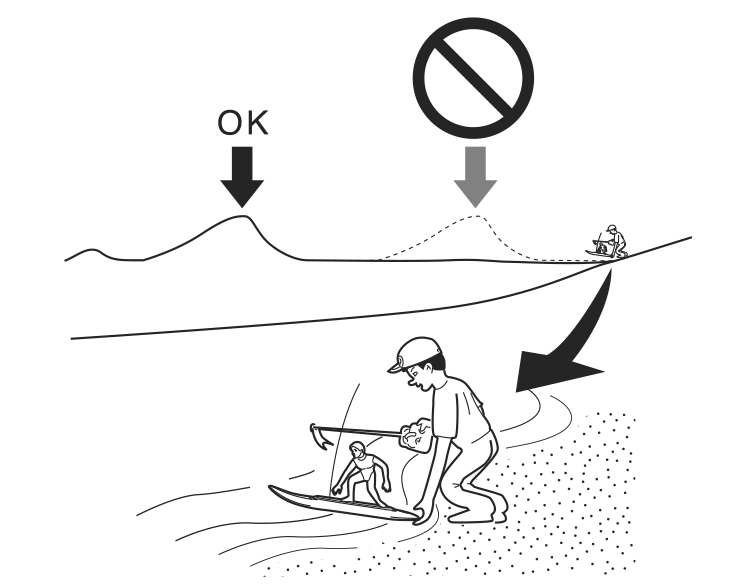
When launching your radio-controlled surfer, pay attention to the oncoming waves to avoid falling into the water and wetting the transmitter.
Launch your RC surfer by placing it into the water in the flattest zones and between wave sets.
Then, ride your toy past the small waves close to the shoreline.
Remember to keep the radio handset dry at all times.
2. Getting Out the Back
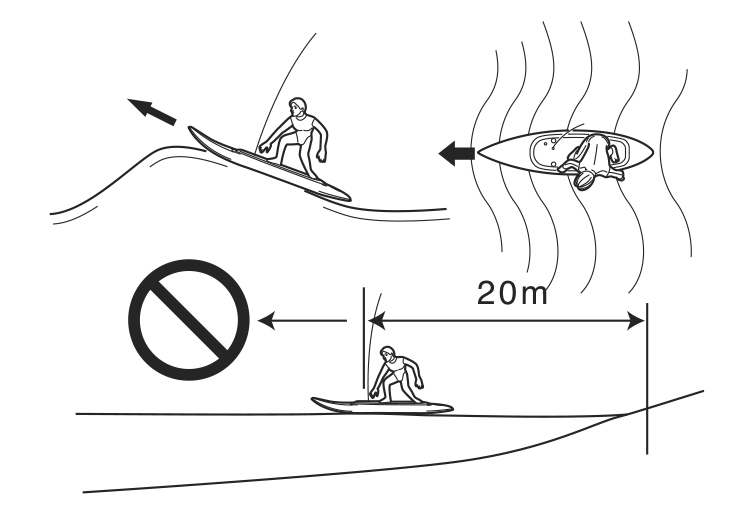
Find a channel or choose the easiest path out through the surf.
Avoid being hit by breaking waves.
You may jump the whitewater straight on and try to steer toward the unbroken faces or shoulders of the incoming waves.
Once you've reached the lineup, position the RC surfer comfortably behind the impact zone for the best wave selection.
Make sure to operate your remote control wave rider from the beach and away from the shoreline while keeping the toy within 20 yards.
3. Waiting for a Good Wave
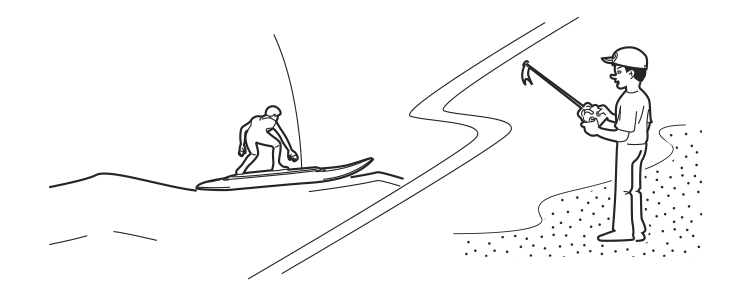
While in the lineup, point the RC surfer toward the shore, paying attention not to get caught inside by incoming breaking waves.
Try to save battery power while waiting for the perfect wave.
4. Catching and Riding a Wave

When your selected wave begins to raise the RC surfer's surfboard tail, switch the motor power on and get ready to take off.
Then, adjust the speed of the model to match the speed of the wave.
After mastering surfing straight toward the shoreline, try using the rudder control to surf across the waves and parallel to the beach.
5. "Cornering" and Kicking Out of Waves
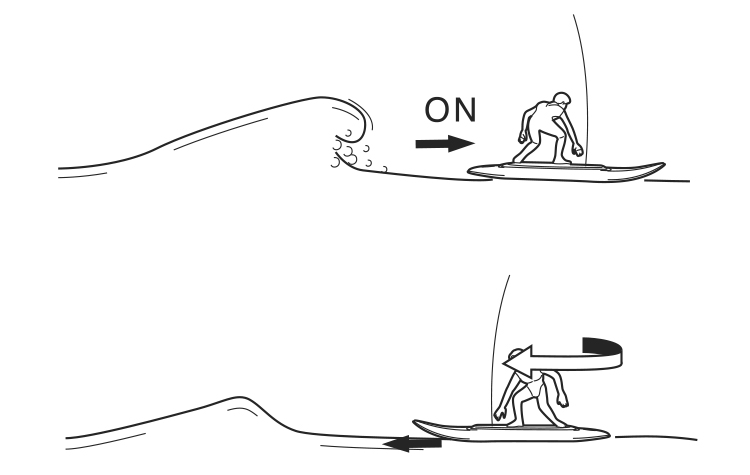
Cornering is the starting point for advanced radio-control surfing.
When your RC surfer has taken off and is close to the bottom of the wave, gently turn the direction control on your transmitter to perform a bottom turn in the desired direction while paying attention to the falling lip.
When the toy starts drawing a nice surf line across the open face of the wave, get the rudder wheel to a neutral position.
As soon as the ride ends or threatens to close out, perform another bottom turn to redirect the RC surfer over the back of the wave.
Always try to kick out to avoid being pounded by a closeout wave. Then, get back to the lineup again.
If the wireless device begins to slow down, the battery power is low. When this happens, ride the remote-controlled toy in to be easily retrieved.
Make sure to save enough battery power to motor into shore and avoid being caught out the back with no power.
Catch a small wave straight to shore and hold the transmitter high when retrieving the RC surfer from the surf.
Once recovered, wash and sand off your toy, and dry it well before removing or changing the battery.
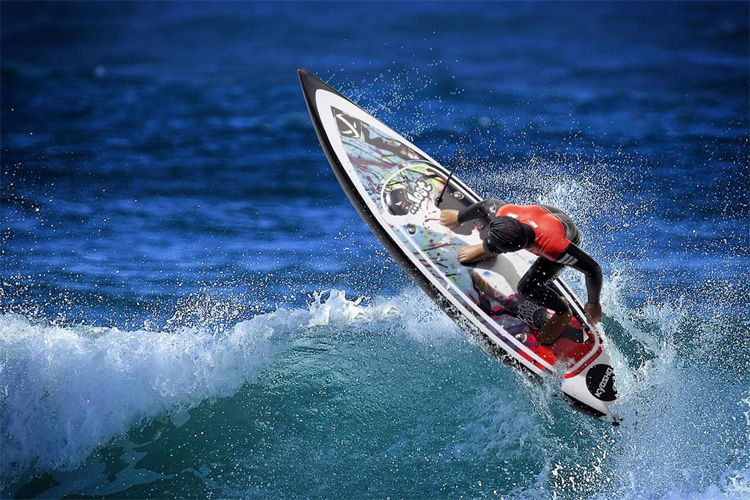
RC Surfer Kit: Items Included
A remote control surfer kit often includes the following items:
- Transmitter (controller);
- Surfboard or bodyboard;
- Surfer figure;
- Battery;
- Charger;
- Maintenance accessories;
Safety Precautions
Radio-controlled surfers are toys, but they should be operated safely. Here are some basic precautions and safety guidelines:
- Do not touch the spinning propellers;
- Do not operate the model on public waterways, in crowded places, and near infants;
- Running the board in strong winds, high waves, floodways, or strong currents can lead to unforeseen accidents and injury;
- Do not swim out to retrieve the board;
- Do not run the RC surfer among floating debris - the propeller may become entangled or damaged;
The RC surfer is one of the coolest surf toys out there. The most popular radio-controlled surfing manufacturers are Kyosho, Bro RC Surfer, and RC Surfrider.
